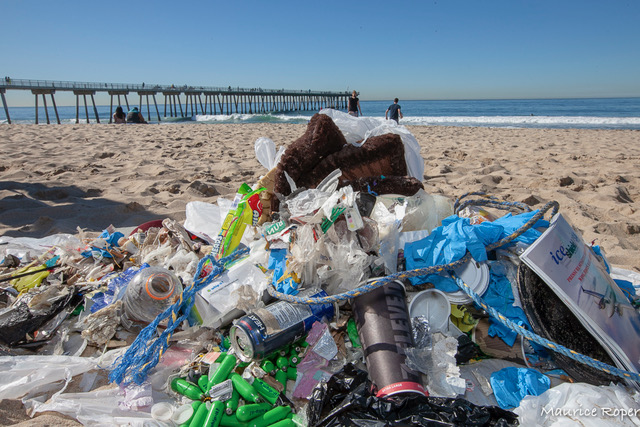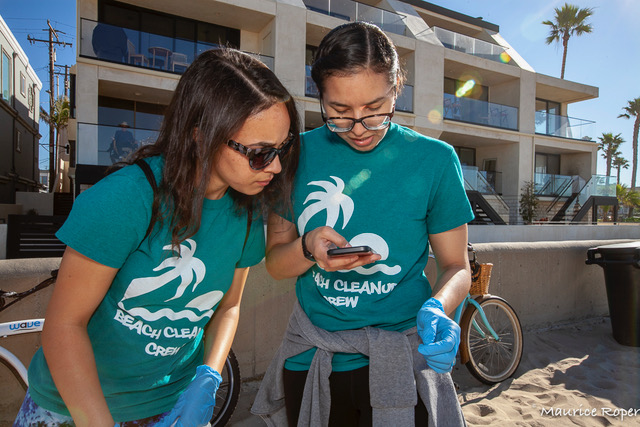By: Yvonne Manjarrez
Hello! My name is Yvonne Manjarrez and I am currently a second-year chemistry graduate student working in USC Professor Megan Fieser’s lab. Our group’s research is focused on the synthesis of sustainable plastics (polymers) as well as developing efficient ways to degrade mass-produced plastics. While plastics meet a variety of needs in our day-to-day lives, many have become familiar with images of plastics leaking into the environment and causing harm to animals in their natural habitats. This is happening so frequently that if we continue at this rate there will be, by weight, more plastic than fish in the ocean by 2050! The growing number of plastics in our environment further motivates our group to use our research to be part of the solution to this problem.

Plastics found at a beach clean-up organized by Professor Fieser in conjunction with the Heal-the-Bay Program.
My research has focused on synthesizing rare earth metal complexes to be used as catalysts for the synthesis of sustainable and degradable polymers. The idea is to use these new polymers to replace polymers currently produced at an industrial scale. When it comes to polymers, you can imagine them as long chains of colored beads where these beads are known as monomers. The color (or chemical structure) of beads you incorporate into the chains can impact the chain’s overall properties (e.g. flexibility, transparency, rigidity). I aim to incorporate two different color beads (monomers) into the chain in an alternating pattern which would result in a copolymer. With the ability to use different combinations of monomers it would be possible to create a library of plastics suitable for a variety of everyday needs.

Polymerization screening reactions I ran with different monomer combinations resulting in a variety of colors!
Furthermore, the rare earth metals (scandium, yttrium, and the lanthanides) were chosen as metal centers for the targeted complexes in these polymerization reactions due to their low toxicity. Although rare is in their name, many rare earth metals are actually as abundant as some commonly used transition metals like copper, nickel, and cobalt. Their abundance and low toxicity make the rare earth metals ideal for their use in the synthesis of plastics for food packaging as well as biomedical applications.

Collette (left, an undergrad in the Fieser Lab) and myself (right) keeping track of the plastics we collected at a beach cleanup through the MarineDebrisTracker app.
My research in the Fieser Group has allowed me to continue being excited about inorganic chemistry while also being able to contribute to making the planet a better place. I am truly grateful to have been selected as a recipient of the Wrigley Institute’s Norma and Jerol Sonosky Summer Fellowship to pursue my studies. With this support, I hope to be able to communicate scientific findings to a diverse set of audiences in an effort to inspire others to make a positive impact on the environment!
If you’d like to learn more about research in the Fieser Group or want to participate in a future beach cleanup, please visit our group website at https://fieserlab.weebly.com/. Thanks for reading!
